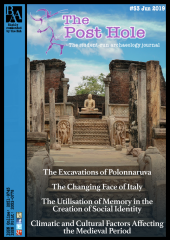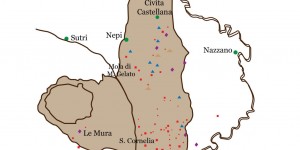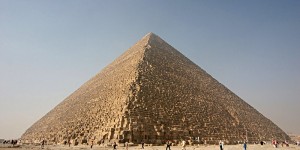Introduction
A responsible environmental history of the medieval period must acknowledge the influence that culture and environment have on each other. In this period, individuals did not have the same technological capabilities to change their environment as in modern times and had less of a buffer to protect themselves from climatic change. It is important to consider this weighting on the side of climate without slipping into environmental determinism, while also acknowledging the significant driving force of culture, especially the expansion of the market economy, in human interaction with it. This will be considered especially with regard to the exploitation of marine fish in northern Europe and reindeer hunting in Norway from roughly the tenth to thirteenth centuries C.E.
Background
An increasing interest in climate change in the last few decades has led to environmental factors being used to explain growing numbers of cultural phenomena. Dry periods have been blamed for the fall of the Akkadian Empire and the Maya civilisation, and dynastic collapse, population decline, nomad invasion, rebellions and regional wars in China (Ljungqvist 2018, 56). Cooling has been blamed for the movements of the Migration Age and the collapse of Norse settlement in Greenland; while warming has been credited to a major expansion in population and agriculture in northern Europe and north-east Asia (ibid.). Of course, to a large extent the climate does control people’s actions. However, in the attitude of “possibilism,” geographical contexts set limits on human affairs without entirely determining them (McNeill 2010, 349). It would be an oversimplification to claim that climatic cooling was the only cause of the movements in the Migration Age. However, it can be acknowledged as one factor which may have caused tribes to move from their territory in search of more viable agricultural land, causing unrest in the places they eventually settled. In the same way, it is unreasonable to claim that the effects of the Medieval Warm Period made population expansion inevitable at its height around the turn of the first and second millennium, but it is true that the warmer climate increased agricultural carrying capacity and thus made it possible for this expansion to occur. Increased population, especially in urban centres, was one of the factors driving the rise of the market economy. This in turn affected the way humans interacted with their environment in exploiting the resources for subsistence and profit. Altogether it is necessary to avoid choosing between environmental and cultural determinism, but to instead acknowledge that climatic change and human response are intricately bound up with each other.
Marine Fish
Patterns of northern European cod fishing in the ninth to fourteenth centuries is a case in point. It has been established that there was a significant increase in the supply of marine fish to inland sites in Europe around the late tenth century. The increase is most clearly marked in England where the proportion of North Sea fish to local catches went from one in ten to fifteen samples to over half the specimens (Barrett et. al. 2011, 1519). Not only did the amount of fish remains increase for this period, but studies of their genomes match them to distant populations in the Arctic (Star et. al. 2017, 9153). This demonstrates that the English and German markets were not only expanding local marine fishing but trading preserved fish from Arctic populations, caught in fisheries such as the ones at Lofoten in northern Norway (ibid.). Furthermore, they were seeking out the northern supplies of fish for themselves. For example, we know from historical records that the English had a fishery near Iceland by the fourteenth century (Barrett et. al. 2011, 1523). An environmentally deterministic view would suggest that this increase in fish consumption could have come from an expansion in fish population which made them an easier and more obvious choice to exploit. However, the increased temperatures of the Medieval Warm Period actually suppressed fish productivity in some North Sea populations, meaning that this explanation can be quickly laid aside (Barrett et. al. 2004, 629).
Instead, cultural explanations are proposed. The increased demand for fish in Christian fasting practises is a potential factor, but the role of fish in monastic fasts is poorly documented before the 12th century (Barrett et. al. 2004, 630). Changes in technology, often a candidate for a deterministic approach, is also unlikely to have had much effect. Cod were caught by line throughout the Middle Ages and unaffected by the developments of dragnet techniques. A decrease in the productivity of freshwater fish, or human overexploitation of the same, is also possible, but does not fully account for the phenomenon since the exploitation of freshwater fish did not slow down but instead became more regulated and intensified in the same period (Barrett et. al. 2004, 629). Instead, Barrett et. al. (2004, 631) put forward the growth of the market economy as an explanation for increased demand of this cheap, high-bulk source of protein. At a more basic level, the driver was demographic change: the population of urban centres had outgrown the productivity of local resources. Agricultural production, freshwater fish exploitation and long-distance trade in marine fish all intensified at the same time suggesting that no area was making up for a deficit in the others, but rather there was a comprehensive effort to feed the increased population. This comes down to a combination of human and environmental factors. It was human demand that drove the intensified and far-reaching demand for protein, but it was partly the favourable climatic conditions in medieval northern Europe which allowed population growth to happen in the first place.
Reindeer Hunting
A similar combination of human and environmental factors controlled the patterns of reindeer hunting in medieval Norway. Following the argument of environmental determinism, it might be expected that reindeer hunting would decline in colder periods when the mountainous territories were less accessible and the prey scarcer. For example, Grosjean et. al. (2007, 205) suggested a binary in which a mountain pass is ‘open’ or ‘closed’ based on the position of the glacier. Instead, using kernel density estimation to date finds associated with reindeer hunting on Norway’s highest ice patches, Pilø et. al. (2018, 7) find that the number of finds continued to rise during the Late Antique Little Ice Age period of cooling. Though the game was less available, the climatic cooling could have caused the trend in a more indirect way; if agricultural productivity was reduced, it would have placed more importance on the exploitation of marginal resources to feed the population despite the population drop in Norway at the time. This explanation does not always work. A remarkable period of intensive hunting occurred not in a cold period of failing crops, but in the second half of the thirteenth century during the Medieval Warm Period suggesting that cultural factors beyond subsistence were at play. The deposition of waste reindeer bones in middens at the four sites in Sumtangen make it clear that more reindeer were killed than could possibly be needed in nearby settlements. Therefore they must have been transported elsewhere, meaning that a market demand for reindeer meat, antlers, and hides must have been a factor (Indrelid and Hufthammer, 2011, 48).
Once again, the climate plays a role. The warm period would have caused a demographic increase which amplified the demand for reindeer products. However, there were also cultural factors at work. The mass hunts, which involved driving the reindeer into lake Finnsbergvatn to be killed by hunters in boats and dragged ashore to be butchered, required considerable mobilisation of labour. Indrelid and Hufthammer (2011, 49–53) speculate that this could have taken place under the control of “the Crown or the clergy”. This was a planned effort rather than an opportunistic capitalising on nearby resources, which is shown by the runic name-labels found on items at the Sumtangen sites (ibid, 45). This practice was much more common among town-dwelling merchants than rural mountain-dwellers who would have little need to learn how to write in runes, suggesting that the town-dwellers were present at the site of the reindeer hunts themselves (ibid, 53).
![A carved reindeer bone from a midden at Sumtangen (author’s own illustration). The runic inscription reads ‘ottar a’ (Óttár owns [this]). These name tags with a personal name and the verb ‘a’ are commonly found in middens in Norwegian towns (Indrelid and Hufthammer 2011, 45).](/sites/theposthole.org/files/styles/large/public/articles/_temp_thumbs/Owen%20Image%201.png?itok=rZ5fc5u5)
Finally, the cultural demand for reindeer antler as a popular craft resource played a role. Antler is the majority material chosen for comb-making as well as needles and tool handles, and the antler specimens found in the town of Bergen match the mitochondrial DNA of the Sumtangen material (Indrelid and Hufthammer 2011). Therefore the demands of craftsmen must have impacted the exploitation of mountain resources, as well as urban population growth and the power structures necessary to mobilise the labour.
Policy and sustainability
The mass reindeer hunts also cast light on another theme of environmental history: human attitudes towards the natural world, and their impact on it as a result. Consistent mass killings of the reindeer must have had such an impact on the reindeer populations and migration patterns that the practice would soon render itself unsustainable. Though Indrelid and Hufthammer (2011, 48) did not attempt to securely date the end of the mass-hunts, they concluded that the mass hunts cannot have lasted for more than a few decades because the supply could not have lasted. This is supported by the fact that radiocarbon dates at all four Sumtangen sites form a small range, all at the same time in the latter half of the thirteenth century (ibid.). This suggests that the people who took part in the hunts did not have long-term sustainability in mind, neither out of respect for the wellbeing of the reindeer herds, nor in the more anthropocentric consideration of allowing exploitation of the same resource on a similar scale in the future. It is interesting to consider what caused the one-off phenomenon of mass reindeer hunts at this specific time and never again, in contrast with the long-distance trade in marine fish which rose more steadily, though both efforts had the same goal: supplying resources to an urban population which had outgrown its ability to sustain itself locally.
The phenomenon of these reindeer hunts is different from the usual pattern of game hunting in Europe, which, throughout the western continent, was traditionally more connected with elite culture than food consumption. This is a case where, “culturally shaped demographic structures and behavioural norms,” had a profound impact on human management of the natural world (Hoffman 2014, 157). Attempts by the elite to protect woodland areas despite their limited usefulness for human subsistence is an early example of what would now come under the heading of political environmental history, wherein humans’ interaction with nature is controlled by deliberate policies as well as general cultural attitudes (McNeill 2010, 347). Clearly, the policy of the elites was concerned more with human preferences than with nature in its own right. Hunting was an important ritual of elite status and the animals were preserved to prolong it. The importance of culture over nature in the elite imagination is evident from the numerous species hunted to rarity or extinction in western Europe for reasons of status or fashion, including beavers and wild cats (Hoffman 2014, 193). The same exceeding of natural limits is evident in fishing, archaeologically shown by the shrinking size of specimens found in middens. Awareness of the limitations on fish supply is shown by increasing attempts to privatise and regulate both inland and marine fishing, including the construction of artificial ponds and a French royal ordinance issued as early as 1289 CE to attempt to limit fish catches (ibid.). Human policies and attitudes, therefore, also had a limiting effect on their interactions with the natural world which must be considered alongside the limits imposed by nature itself. The overexploitation even in this period of smaller populations and limited technologies compared to the modern world shows the scale of the impact that culture can have on environment as well as the other way around.
An environmental history considering human interactions with nature must consider the limits imposed by environmental factors, but also cultural temptations to overstep those limits to fulfil not only subsistence-level needs but also culturally constructed demands which humans have tended to prioritise above the preservation of nature. To avoid a deterministic approach, it is helpful to remember that human demographics, attitudes and cultural preferences both influence and are influenced by their climatic and environmental surroundings, with no factor consistently exceeding the others as most important.








